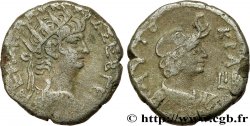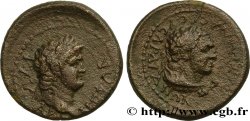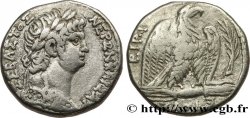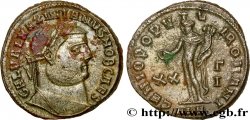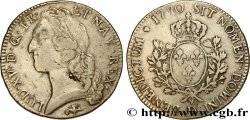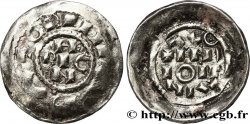E-auction 104-54720 - bpv_297304 - NERO Tétradrachme syro-phénicien
Sie müssen angeschlossen sein und von cgb.fr genehmigt werden, um in einer E-Auktion teilzunehmen.Melden Sie sich an, um zu wetten..Die Kontobestätigungen sind innerhalb von 48 Stunden nach Ihrer Anmeldung gemacht.Warten Sie nicht bis die letzten zwei Tage vor dem Abschluss eines Verkaufs, um Ihre Registrierung abzuschließen. Klickend "BIETEN" verpflichten Sie sich vertraglich, diesen Artikel zu kaufen und Sie nehmen ohne Reserve die allgemeinen Verkaufsbedingungen für den e-auctions zu cgb.fr an.
Der Verkauf wird an der Zeit auf der Übersichtsseite angezeigt geschlossen werden. Angebote, die nach der Schließung Zeit empfangen sind, werden nicht gültig.
Bitte beachten Sie, dass die Fristen für die Einreichung Ihres Angebots auf unsere Server können variieren und es kann zur Ablehnung Ihres Angebots entstehen, wenn es in den letzten Sekunden des Verkaufs gesendet wird. Die Angebote sollen mit ganzer Zahl ausgeführt sein, Sie können Kommas oder des Punktes in Ihrem Angebot nicht erfassen. Bei Fragen klicken Sie hier, um einen Blick auf die FAQ E-Auktionen.
KEINE ANSCHAFFUNGSKOSTEN FÜR DIE KÄUFER.
KEINE ANSCHAFFUNGSKOSTEN FÜR DIE KÄUFER.
| Schätzung : | 120 € |
| Preis : | 61 € |
| Höchstgebot : | 61 € |
| Verkaufsende : | 13 April 2015 15:41:00 |
| Bieter : | 8 Bieter |
Type : Tétradrachme syro-phénicien
Datum: an 9/ 111
Name der Münzstätte / Stadt : Antioche, Syrie, Séleucie et Piérie
Metall : Silber
Durchmesser : 24 mm
Stempelstellung : 12 h.
Gewicht : 14,00 g.
Kommentare zum Erhaltungszustand:
Portrait caractéristique de cette année, bien centré mais sur un flan très court, comme très fréquemment
N° im Nachschlagewerk :
Pedigree :
Cet exemplaire, qui provient de la trouvaille dite de Banias, est le 0084_008 de la base TSP
Vorderseite
Beschreibung Vorderseite Buste lauré de Néron jeune homme à droite avec l'égide sur le cou (O*4).
Legende des Averses NERWN KAISAR - SEBASTOU, (Nerwn Kaisaros Sebastou)
Übersetzung der Vorderseite (Néron césar auguste).
Rückseite
Beschreibung Rückseite Aigle debout à droite sur un foudre ailé, les ailes déployées ; dans le champ à droite, une palme verticale.
Legende des Reverses : ETOUS AIR . Q
Übersetzung der Rückseite (An 9 du règne / An 111 de l’ère césarienne).
Kommentare
On constate, dès cette année, la neuvième du règne, l’adjonction d’un point dans le champ du revers et une permutation complète de celui-ci, l’aigle se tournant de gauche à droite et la palme passant de gauche à droite ; cette disposition restera la même pendant cinq ans. Peut-on en déduire un changement de titre ou de politique monétaire ? On semble avoir cherché à permettre de distinguer facilement les émissions du début du règne de celles qui suivirent.
Les portraits sont toujours naturalistes et sans vouloir prédire le visage qu’aura Néron à la fin de son règne, on voit déjà que le fils d’Agrippine s’empâte.
Cette variante de légende est rare et souvent difficilement lisible ; dans la base TSP maintenue par Michel Prieur, seuls vingt-quatre exemplaires sont maintenant répertoriés. On note d’ailleurs qu’aucun exemplaire de cette variante n’est présent dans les collections nationales françaises, mais seulement à Vienne, Munich et au British Museum.
We note, from this year, the ninth of the reign, the addition of a dot in the field of the reverse and a complete permutation of it, the eagle turning from left to right and the palm passing from left to right; this arrangement will remain the same for five years. Can we deduce a change of title or monetary policy? It seems that an attempt was made to allow easy distinction between the issues of the beginning of the reign and those that followed. The portraits are always naturalistic and without wanting to predict the face that Nero will have at the end of his reign, we can already see that the son of Agrippina is getting fatter. This variant of legend is rare and often difficult to read; in the TSP database maintained by Michel Prieur, only twenty-four examples are now listed. It should also be noted that no example of this variant is present in the French national collections, but only in Vienna, Munich and the British Museum
Les portraits sont toujours naturalistes et sans vouloir prédire le visage qu’aura Néron à la fin de son règne, on voit déjà que le fils d’Agrippine s’empâte.
Cette variante de légende est rare et souvent difficilement lisible ; dans la base TSP maintenue par Michel Prieur, seuls vingt-quatre exemplaires sont maintenant répertoriés. On note d’ailleurs qu’aucun exemplaire de cette variante n’est présent dans les collections nationales françaises, mais seulement à Vienne, Munich et au British Museum.
We note, from this year, the ninth of the reign, the addition of a dot in the field of the reverse and a complete permutation of it, the eagle turning from left to right and the palm passing from left to right; this arrangement will remain the same for five years. Can we deduce a change of title or monetary policy? It seems that an attempt was made to allow easy distinction between the issues of the beginning of the reign and those that followed. The portraits are always naturalistic and without wanting to predict the face that Nero will have at the end of his reign, we can already see that the son of Agrippina is getting fatter. This variant of legend is rare and often difficult to read; in the TSP database maintained by Michel Prieur, only twenty-four examples are now listed. It should also be noted that no example of this variant is present in the French national collections, but only in Vienna, Munich and the British Museum







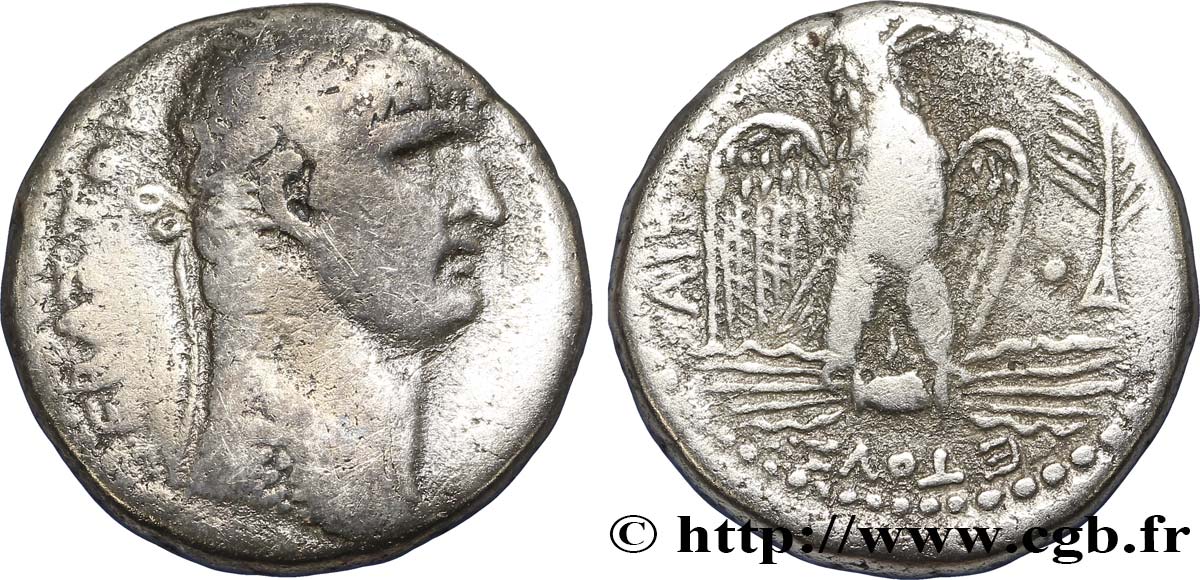
 Berichten über einen Fehler
Berichten über einen Fehler Die Seite drucken
Die Seite drucken Teilen meiner Auswahl
Teilen meiner Auswahl Stellen Sie eine Frage
Stellen Sie eine Frage Einlieferung/Verkauf
Einlieferung/Verkauf
 Details
Details

